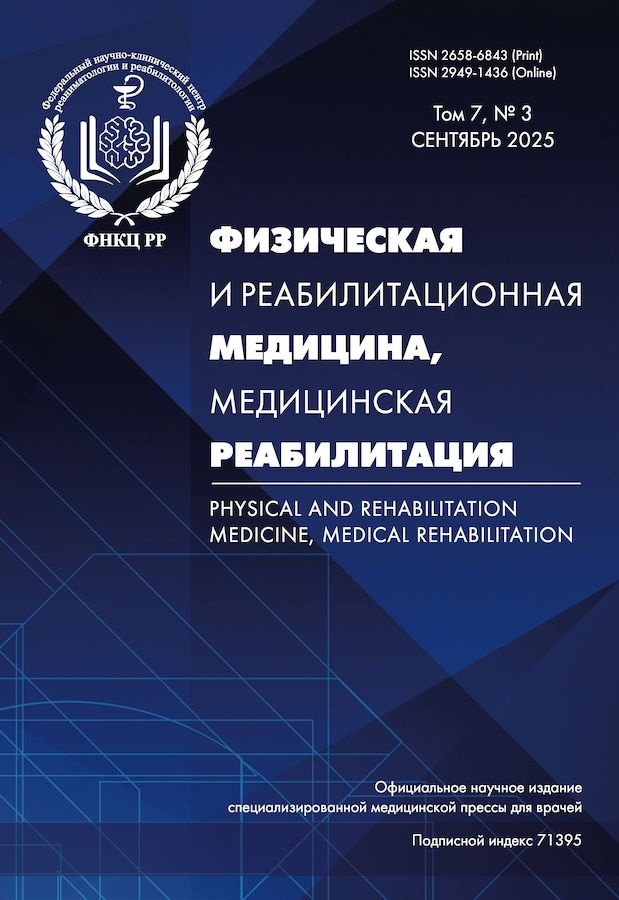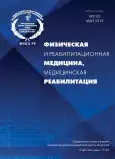REATTACH FOR AUTISM: MAKING SENSE
- Authors: Weerkamp-Bartholomeus P.1,2
-
Affiliations:
- Journal for ReAttach Therapy and Developmental Diversity
- ReAttach Therapy International Foundation
- Issue: Vol 1, No 2 (2019)
- Pages: 85-89
- Section: Articles
- URL: https://bakhtiniada.ru/2658-6843/article/view/19192
- DOI: https://doi.org/10.36425/2658-6843-19192
- ID: 19192
Cite item
Full Text
Abstract
Keywords
Full Text
##article.viewOnOriginalSite##About the authors
Paula Weerkamp-Bartholomeus
Journal for ReAttach Therapy and Developmental Diversity; ReAttach Therapy International Foundation
Email: reattachfoundation@gmail.com
President of the Editorial Council of Journal for ReAttach Therapy and Developmental Diversity and President and founder of ReAttach Therapy International Foundation
References
- American Psychiatric Association. (2013). In Diagnostic Statistic Manual V. American Psychiatric Association.
- Bartholomeus, P. (2015). ReAttach a new schematherapy for adults and children? Part I adults part II children. Clinical Neuropsychiatry.
- Breveglieri, R. G. (2006). Somatosensory cells in area PEc of macaque posterior parietal cortex. Journal of Neuroscience, 26;3679-3684.
- Chow, M. P. (2012). Age-dependent brain gene expression and copy number anomalies in autism suggest distinct pathological processes at young versus mature ages. PLoS Genet., 8(3):e1002592.
- Coote, K. L. (1999). Optimism bias in children's motor performance expectations. The Australian Educational and Developmental Psychologist, Vol. 16 pp 52-61.
- Courchesne, e. a. (2018). The ASD Living Biology: from cell proliferation to clinical phenotype. Molecular Psychiatry, doi: 10.1038s41380-018-0056-y.
- Courchesne, E. M.-B. (2011). Neurons number and size in pre-frontal cortex of childen with autism. JAMA, 306(18):2001-2010 [PubMed:22068992].
- Courchnese, E. (1997). Brainstem, cerebellar and limbic neuroanatomical abnormalities in autism. Curr Opin Neurobiology, 7;269-278.
- Crane, L. L. (2012). Remembering the past and imagining the future in autism spectrum disorder. Memory, 21(2), 157-166 doi: 10.1080/096582 11.2012.712976.
- Fitzgerald, M. (2019). The history of autism in the first half century of the 20th century: new and revised. Journal for ReAttach Therapy and Developmental Diversities, Feb 17;1(2):70-77 https://doi. org/10.26407/2018jrtdd.1.13.
- Frith, U. (2003). Autism Explaining the Enigma. In U. Frith, Autism Explaining the Enigma. Hoboken, NJ: Blackwell Publishing.
- Gohlke, J. G. (2007). Computational models of neocortical neuronogenesis and programmed cell death in the developing mouse, monkey and human. Cerebral Cortex, 17(10)2433-24442 [PubMed:20198484].
- Jones, W. K. (2013). Attention to eyes is present but in decline in 2-6 -month-old-infants later diagnosed with autism. Nature, 504(7480):427-431 [PubMed:24196715].
- Khalil, R. T. (2018). Social decision making in autism: On the impact of mirror neurons, motor control and imitative behaviors. CNS Neuroscience & Therapeutics, doi: 10.1111/cns.13001.
- King, M. B. (2009). Diagnostic change and the increased prevalence of autism. International Journal Epidemiology, 38(5): 1224-34.
- Klin, A. J. (2003). The enactive mind, or from actions to cognition: Lessons from autism. In A. J. Klin, Philosophical Transactions of the Royal Society of London, Series B, Biological Sciences (pp. 358 (1430), 345-360). London.
- Krueger, J. (2019). Enactivism, Other Minds and Mental Disorders. In F. M. Silva, Radical Views on Cognition (pp. 1-44).
- Lind, S. B. (2010). An investigation of episodic memory and episodic future thinking in adults with autism. Journal of Abnormal Psychology, 119(4), 896-905 doi: 10.1037/a0020631.
- Marazziti, D. M. (2018). Oxytocin and autism spectrum disorder. In Weerkamp-Bartholomeus, Autism: is there a place for ReAttach therapy? Rome: Giovanni Fiorit Editore.
- Petter, S. (2018). Indication of ReAttach within modalities of therapy: an improved ontology? In P. Weerkamp-Bartholomeus, Autism: is there a place for ReAttach Therapy? Rome: Giovanni Fioriti Editore.
- Pierce, K. C. (2011). Preference for geometric patterns early in life as a risk factor for autism. Arch of Gen. Psychiatry, 68(1):101-109 [PubMed:24196715].
- Pierce, K. C. (2016). To Screen or Not to Screen Universally for Autism is not the Question: Why the Task Force Got It Wrong. Journal of Pediatrics, 176:182-194 [PubMed:27421956].
- Poletaev, A. (2018). Autism: genetics or epigenetics? In P. Weerkamp-Bartholomeus, Autism: is there a place for ReAttach Therapy? (pp. 123-134). Rome: Giovanni Fioriti Editore.
- Rochat, M. V.-S. (2013). Impaired vitality form recognition in autism. Neuropsychologia, 51;1918-1924.
- Smiley, K. G. (2017). Unveiling the autism epidemic. Journal of Neurological Clinical Neuroscience, 16.
- Trajkovski, V. (2019). Health Condition in Persons with Autism Spectrum Disorders. Journal for ReAttach Therapy and Developmental Diversities, Febr 2017;1 (2):112-124 https://doi.org/10.26407/2018jrtdd.112.
- Weerkamp-Bartholomeus. (2015). ReAttach: The exciting development of a promising intervention for Autism Spectrum Disorder. In M. Fitzgerald, Autism Spectrum Disorder - Recent Advances (p. doi: 10.5772/60462). Intech Open.
- Weerkamp-Bartholomeus. (2018). Autism: the pre-conceptual state of mind. Journal for ReAttach Therapy and Developmental Diversities, Aug 15; 1 (1):7-14 https://doi.org/10.26407/2018jrtdd.13.
- Weerkamp-Bartholomeus. (2018). ReAttach Academy C.A.T. Module. In Weerkamp-Bartholomeus, ReAttach Academy C.A.T. Module. Voer-endaal: Stg ReAttach Therapy International.
- Weerkamp-Bartholomeus. (2018). Treatment of autism aspects and overlapping symptomatology from a network perspective of clinical neuropsychiatry. In P. Weerkamp-Bartholomeus, Autism: is there a place for ReAttach Therapy? Rome: Giovanni Fioriti Editore.
- Weerkamp-Bartholomeus. (2019). How to tailor a trans-diagnostic intervention to the individual state of mind of individuals with ASD? Journal for ReAttach Therapy and Developmental Diversities, Feb 17;1 (2): 78-83 https://doi.org/10.26407/2018jrtdd.114.
Supplementary files







